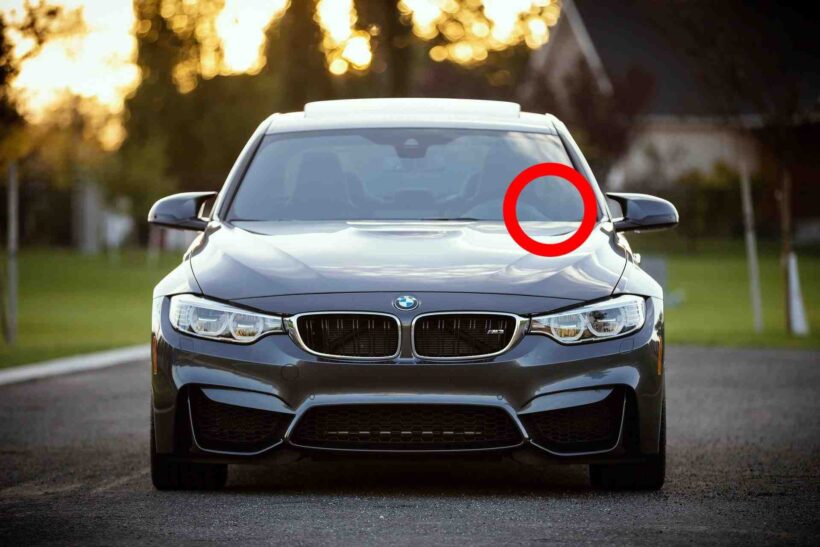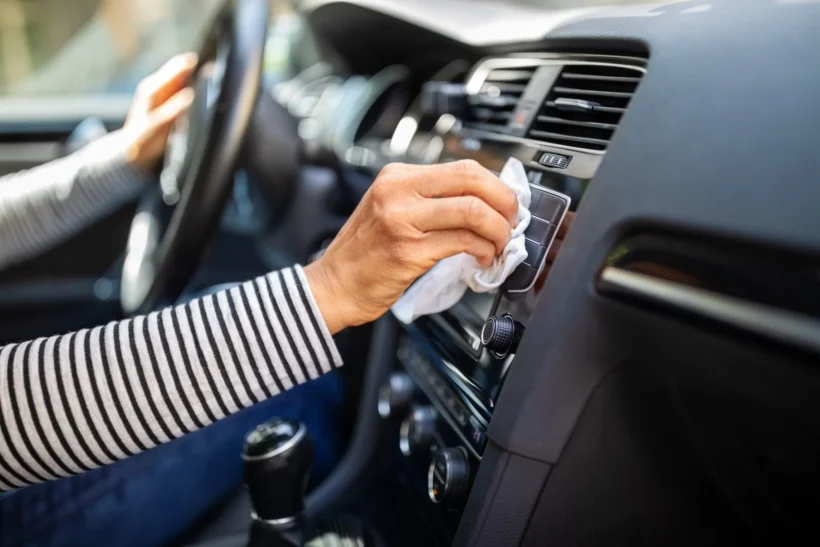Looking for a used car can be daunting—where do you start, and how can you be sure you’re getting a good deal? Our checklist before buying a used car eliminates guesswork by outlining critical steps for a well-informed purchase, from budgeting to assessing vehicle condition. Expect no fluff, just a concise, straight-to-the-point guide that empowers you to buy with confidence and clarity.
Key Takeaways
- Budget for a used car purchase should include not only the purchase price but also ongoing costs like registration, insurance, maintenance, fuel, and vehicle depreciation, with a recommended allocation of 10-20% of household income towards car ownership.
- Before buying, thoroughly inspect the car’s history and condition, including VIN verification, PPSR check for financial encumbrances, service history, mechanical integrity, and overall safety features, to avoid future unexpected expenses or legal complications.
- Negotiate the used car price with confidence by understanding its market value, leveraging the vehicle’s condition and history, and being aware of the legalities and paperwork involved, such as statutory warranty conditions and the need for thorough documentation for the sale process.
Setting Your Used Car Budget
Before you dive into the bustling market of used cars in Perth, it’s essential to craft a solid financial strategy. This pre-emptive step is key to determining an affordable budget that won’t strain your finances, ensuring you can navigate the used car landscape without financial worry. Typically, it’s wise to earmark about 10-20% of your household income for car-related expenses, but how does one arrive at this figure? Start by subtracting your critical living costs from your total income to find your disposable income, which can then be allocated to your vehicle purchase.
Remember, the costs associated with car ownership extend beyond the sticker price. You’ll need to consider ongoing expenses such as stamp duty, regular maintenance, and insurance premiums. By adopting this comprehensive budgeting approach, you’ll set yourself up for sustained financial ease, long after you’ve turned the key and pulled out of the dealership with your chosen used car from Perth.

Understanding the Total Cost of Ownership
There’s more to acquiring a used vehicle than just its initial cost. The total cost of car ownership extends beyond the purchase price to include ongoing expenses such as:
- Registration
- Insurance
- Maintenance
- Fuel
- Vehicle depreciation
Depreciation, in particular, affects the long-term value of the car and its eventual resale value, which is an important factor to consider when looking at the number of cars sold.
Regular maintenance history and vehicle mileage are key indicators of future part replacements, influencing the cost of ownership. Researching the specific engine model and variant can give you insights into known issues, performance expectations, and specialized maintenance needs. To fully grasp the total cost of ownership, it’s crucial to consider all these elements.
Finding Competitive Interest Rates for Car Loans
While buying a used car upfront might be the ideal scenario, many buyers rely on a car loan to finance their purchase. For long-term affordability of a used car, it’s vital to secure a car loan with a competitive interest rate. Surprisingly, using the car as collateral for the car loan might help in receiving a lower interest rate. Lower interest rates reduce the overall financial burden over the life of the car loan, making your purchase more economical.
By comparing loan offers from different lenders and shopping around, you can land a competitive rate. Take the time to do your research before committing to a lender. This diligence will pay off in the long run.
Pre-Purchase Vehicle Identification
After setting your budget and exploring finance options, it’s time to confirm the vehicle’s identification and history. The Vehicle Identification Number (VIN) plays a pivotal role in this step. The VIN is a unique code that provides valuable information about the car’s manufacturing and ownership history. This 17-character unique identifier can be found in the owner’s manual or stamped on the driver’s side door.
By crosschecking the VIN with the registration papers, you can verify both the seller’s authenticity and the vehicle’s registered status. This step provides a solid foundation for a safe and legal purchase.

Checking for Money Owing on the Vehicle
Conducting a Personal Property Securities Register (PPSR) check is the subsequent step in the pre-purchase identification process. This check is vital for understanding the financial and legal status of a used car before purchase. A PPSR report provides crucial details such as whether the vehicle has any outstanding finance, is stolen, or has been previously written off.
Acquiring a PPSR report is a straightforward process that can be done online or through a dedicated phone service, making it a convenient step in the car-buying process. The peace of mind that comes from knowing the car is debt-free and not encumbered with unpaid finance or other issues is priceless.
Verifying Service History and Odometer Reading
The service history and odometer reading of a car act as a report card, revealing its maintenance status. Regular servicing records provide insight into the vehicle’s maintenance history and can enhance a buyer’s confidence in the purchase. A well-maintained used car typically has a documented service history at intervals of every 10,000-15,000 km or roughly every six months.
Further, the average yearly increase in odometer reading should be around 12,000-15,000 km in Australia. This can help verify that the service history and odometer readings are consistent. Consistency in these records is a good sign that the used car has been well taken care of.
Evaluating the Car’s Condition
Once the vehicle’s identification and history are confirmed, you should then assess the car’s condition. A comprehensive evaluation is crucial in making an informed purchasing decision. For a thorough inspection, consider bringing a mechanic along. Their professional expertise can reveal potential issues with the car that might not be visible to the untrained eye.
An inspection report from a qualified mechanic can provide a detailed account of the car’s mechanical and cosmetic condition. This report can serve as a powerful tool when negotiating the price, as it verifies the car’s condition and highlights any necessary repairs.

Inspecting for Cosmetic Damage and Colour Differences
Although the mechanical condition is of utmost importance, the cosmetic condition deserves attention too. Check for signs that may reveal past accidents or repairs, such as loose or mismatched panels. Inspecting the car for dents, ripples, or any irregularities can imply previous bodywork and needs to be accounted for while assessing a used car.
Pay attention to the paint consistency. Variable paint consistency, mismatched colors, or overspray can be indicators of bodywork and should be inspected to ensure the vehicle’s paint finish is uniform. These cosmetic checks can provide valuable insights into the car’s past and its potential future needs.
Checking Under the Hood for Oil Leaks and Engine Wear
Looking under the hood can expose vital details about the car’s engine health. Look for any coolant or oil leaks around the engine area and under the car, visible as wet spots or stains. Listen for unusual noises or vibrations upon startup that could signal potential internal issues like worn bearings or pistons.
Inspect the condition of engine belts and hoses for visible cracks or fraying, and ensure timing belts or chains are serviced according to the manufacturer’s schedule. Evaluate the engine’s maintenance history and oil condition, considering previous overheating problems or error codes that might signify major concerns. If possible, perform an engine compression test and diagnostic scan to unmask issues such as worn-out piston rings or valve problems.
Assessing Interior Wear and Safety Features
The interior condition of a car and its safety features hold equal importance as its exterior condition. Check the functionality of the steering wheel and central locking system for signs of interior wear. Confirm the presence and condition of essential safety features during the inspection.
Test all technological features, including those related to comfort in all seating positions, for proper operation. ANCAP safety ratings can be a valuable resource to evaluate the safety standards of the used vehicle being considered. A car with superior safety features not only ensures a safe drive but can also boost your confidence on the road.

Taking the Car for a Test Drive
Before you start negotiating the price, it’s essential to take the car for a test drive. A test drive allows you to:
- Evaluate the vehicle’s handling and performance
- Check for smooth gear transitions
- Assess acceleration from a stop and while cruising
- Perform parking and low-speed handling maneuvers
- Drive on different road types, including urban and arterial roads, and if possible, motorways
This ensures the new car performs well in various driving conditions.
While on the drive, be attentive to any unusual noises or vibrations, as they could signal underlying issues with the vehicle. Opt for a longer test drive if possible. This can reveal problems that aren’t detectable during a shorter drive and gives you a better feel for the car.
Feeling the Steering Wheel and Brakes
During the test drive, it’s essential to pay attention to key components like the steering wheel and brakes. Check for excessive play and vibrations in the steering wheel, which could indicate issues with suspension or alignment. A car that pulls to one side or causes vibrations could indicate potential suspension or alignment problems.
Effective braking is equally important. The car should stop smoothly, strongly, and in a straight line. A brake pedal that feels spongy or sinks to the floor could signal problems and requires further inspection. These checks can help identify potential issues that may require costly repairs down the line.
Listening for Engine and Transmission Signs
When you’re driving, listening is just as important as observing. Listen for the engine’s smooth operation and absence of rattling or knocking sounds during acceleration, deceleration, and steady driving. Rattling or knocking from the engine can suggest issues such as improper tuning or general wear that might necessitate costly repairs.
Ensure the transmission shifts gears smoothly and without hesitation to avoid potential future transmission problems. A knocking noise when turning in front-wheel drive vehicles can indicate worn constant-velocity (CV) joints, which may require attention. These audible clues can help you identify potential problems before they become major issues.

Negotiating a Fair Price with Confidence
After a thorough inspection and test drive of the car, you’re ready to negotiate the price. Understanding the difference between sticker price, invoice price, and dealer holdback price can surprise a dealer and strengthen your negotiating position. Collect written quotes from several dealerships to play the offers against each other, providing leverage for a better deal.
Maintain control during the negotiation process and guide the discussion to gain a strategic advantage. Confidence and assertiveness are vital in negotiating a lower price for the used car or being able to walk away if the deal isn’t right.
Make sure to be ready to walk away from the purchase if the seller is not willing to negotiate the price. It’s important not to rush into a deal. If issues are noticed during the inspection or test drive, negotiate a lower price by discussing these problems and requesting a discount.
Researching the Car Market Value
Understanding the car’s market value is a key strategy in price negotiation. Assessing the car’s market value is crucial in determining what constitutes a fair price, considering factors like the car’s condition and mileage. Before price negotiations, it is recommended to research the market value of the specific make and model you are interested in purchasing.
Knowing the car’s invoice price and sticker price offers leverage during price negotiations. Using resources like Redbook, you can enter details such as make, model, year, and kilometers traveled to estimate the car’s current market value. This knowledge can give you a clear edge in the negotiation process and help you secure a fair deal.
Using Vehicle Condition and History as Leverage
Leveraging the vehicle’s condition and history can also be powerful in price negotiations. Checking the car’s history report can identify any past accidents or major repairs that can be used to negotiate a better deal.
If the car has been involved in major accidents or undergone significant repairs, this can significantly impact its value. Use this information to your advantage when discussing the price with the seller. This strategy can help you ensure that you’re not overpaying for the car and that the price reflects the car’s actual value and condition.

Legalities and Paperwork
Once the price is negotiated, you can proceed to finalize the purchase. However, there are legalities and paperwork involved in purchasing a used car that you need to understand. In Australia, consumers buying a second-hand vehicle from a dealer typically have a period to reconsider their purchase known as the cooling-off period. The duration of this period varies by state.
During this period, you can cancel the sales contract by providing written notice to the dealer, who is then obliged to refund any deposit paid, subject to retaining a small cancellation fee. Statutory warranty conditions provided by dealers also vary. If you’re not comfortable with the deal, you can voluntarily relinquish your cooling-off rights by signing a waiver form, under no coercion from the dealer, and it must be witnessed by a third party.
Understanding Statutory Warranty and Private Sale Conditions
Dealers provide a mandatory guarantee known as a statutory warranty, or car warranty, on used cars that meet specific conditions, ensuring that the vehicle is free from certain defects for a specified period after purchase. The conditions and duration of the statutory warranty vary depending on the state.
When buying from a private seller, it’s important to note that they are not obligated to provide a statutory warranty. This differentiates private sales from purchases made from licensed dealers. Understanding these conditions can help you make an informed decision and protect your rights as a buyer.
Finalizing the Purchase ─ What Documents to Sign
You’ll need to sign the necessary documents to finalize the purchase. When buying a used car from a licensed dealer, a contract of sale must be signed, which is a binding legal document. This contract should include the total cost, trade-in amount, and any special conditions that were agreed upon.
If purchasing from a private seller, a transfer of ownership document is required to be filled out by both the buyer and seller. Be aware that buying at an auction may result in a contract being formed at the moment the auctioneer’s hammer falls and the highest bid is accepted. Also, remember to check for any outstanding debts on the car or if it has been previously written off by conducting a PPSR check.
These steps ensure a smooth transaction and a clear transfer of ownership.

Summary
Navigating the process of buying a used car can seem daunting, but with the right knowledge and preparation, it can be a rewarding experience. From setting your budget and understanding the total cost of ownership, through inspecting the vehicle and taking a test drive, to negotiating a fair price and finalizing the purchase, every step is crucial.
Armed with this comprehensive checklist, you’re now better equipped to make an informed decision and drive home in a used car that meets your needs and budget. Happy car hunting!
Frequently Asked Questions
What is a cooling-off period?
A cooling-off period is a specific timeframe in which a customer can cancel a sales contract by giving written notice to the dealer, and the duration differs by state. It provides consumers with the opportunity to reconsider their purchase decision and cancel the contract if needed.
What is a PPSR check?
A PPSR check is essential for understanding the financial and legal status of a used car before purchase. It helps ensure you’re making a safe investment.
What is the total cost of car ownership?
The total cost of car ownership includes the purchase price and ongoing expenses like registration, insurance, maintenance, fuel, and vehicle depreciation. It’s important to consider all these factors when evaluating the cost of owning a car.
How can I negotiate a fair price for a used car?
To negotiate a fair price for a used car, research the car’s market value, leverage the vehicle’s condition and history, and be prepared to walk away if needed. This approach can help you secure a reasonable deal.
What documents do I need to sign when buying a used car?
When buying a used car from a licensed dealer, you need to sign a contract of sale. If purchasing from a private seller, you’ll need to fill out a transfer of ownership document signed by both the buyer and seller.

